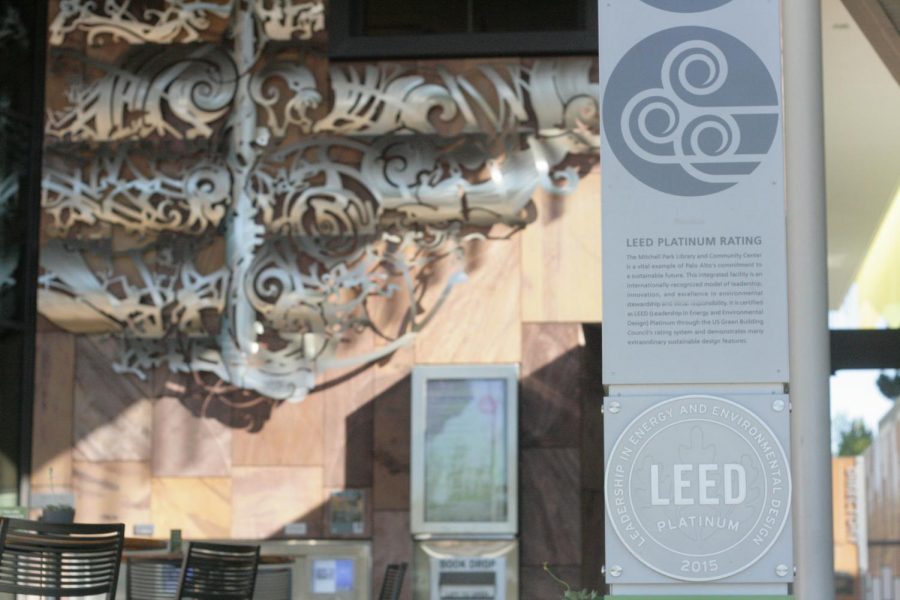LEED-ing the Effort
Local libraries set the standard for environmental sustainability
A pillar outside the entrance to the Mitchell Park Community Center enshrines the building’s LEED Platinum status. It earned more than 80 points out of 110 on the certification scorecard for its various sustainability features. “LEED platinum is actually the highest honor you can get … then it goes down to Gold, Silver and Certified,” Tam says.
A cold blast of air and muted, sterile odor mean little more than a welcome respite for library-goers on an unseasonably hot Friday afternoon. Yet to Valerie Tam, a 28-year-old engineer with the City of Palo Alto Public Works Department, they represent countless hours of planning and construction, the products of which she points out like exhibits at a museum, such as the windows with environmentally friendly sealant and external water-based cooling system.
These features were part of a coordinated attempt to maximize the Mitchell Park Library’s sustainability. For its careful employment of green materials, ranging from stone recycled from quarries to wood sourced from sustainably managed forests, the facility received a Platinum certification in Leadership in Energy and Environmental Design. Such a distinction requires construction managers like Tam to leave no stone unturned, with seemingly mundane choices in carpeting, temperature regulation and lighting yielding opportunities for environmental optimization.
Volatile compounds
The new car smell is a commonly discussed phenomenon, but its potential health risks garner less acknowledgment. Sustainability architects, Tam says, must deal with something similar — a new building smell, so to speak.
The underlying principle is the release of volatile organic compounds. The Environmental Protection Agency classifies these compounds, abbreviated as VOCs, as any carbon-based substance that is chemically volatile, meaning it vaporizes below 250 degrees Celsius. According to Tam, VOCs are most commonly emitted from things like paints and adhesives, meaning that everything from fresh carpets to countertops can hamper indoor air quality.
“VOCs are actual particles in the product that become emissions,” Tam says. “It’ll fade over time, but it is a constant thing that’s present in your building. LEED focuses on trying to lower that emission.”
Finding non-emitting alternatives to common building components is key. Tam finds one such example in a mounting board on the wall of an indoor reception area.
“You want to have no urea formaldehyde — that’s a resin used to bind particle board,” Tam says, gripping the board with her fingers.
Fly ash concrete
Concrete’s earliest use dates back to the Egyptian empire, according to the Royal Society of Chemistry. Yet the grey façade that greets patrons of the recently rennovated Rinconada Library differs from the concrete of old.
This difference lies in the use of fly ash, a waste product from coal-fired powerplants. Fly ash is cementitious, meaning that it possesses cement’s ability to hold rocks together. “When you’re using cement, you can use a percentage of fly ash as recycled material,” Tam says.
The Portland Cement Association lists fly ash as a pozzolanic material, meaning that its binding properties are activated by products of aging concrete and allows concrete’s binding to effectively replenish itself.
Despite the exhaustive measures the library has taken to merit certification, the LEED standard marches on. Mitchell Park obeys version three of the standard. A fourth version was released before construction could finish.
“LEED challenged the status quo with the concept that buildings actually function as living, breathing organisms,” a spokeswoman explains in a video revealing LEED version four.
It intends to continue this trend well into the future, and civil engineers like Tam are taking notes.

